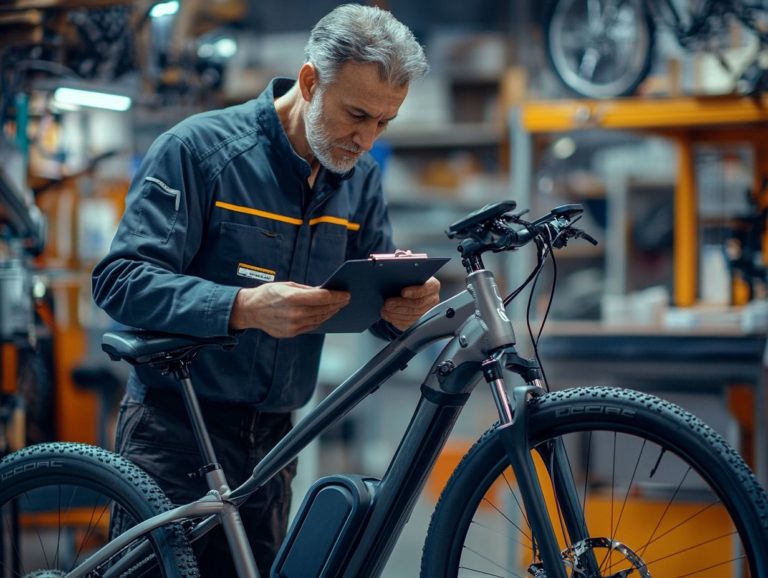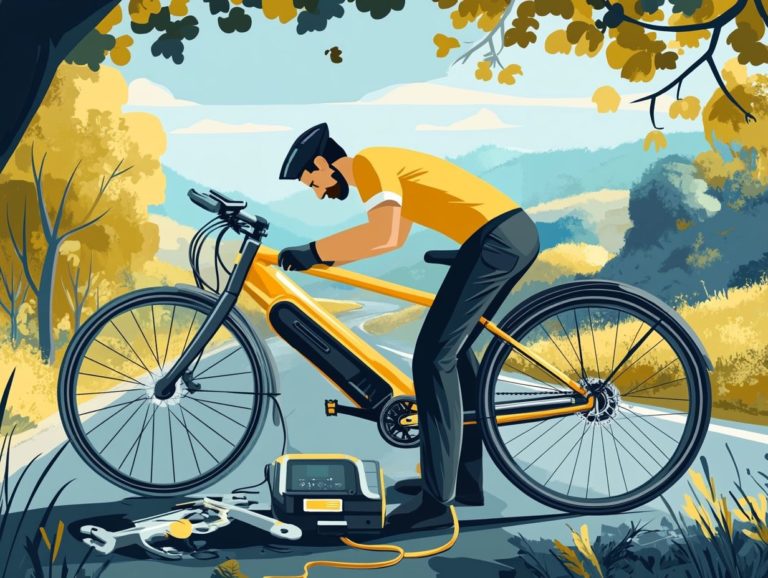DIY Fixes for Electric Bicycle Brake Problems
Electric bicycles provide an exhilarating experience. However, their performance relies heavily on one crucial component: the ebike brakes.
Understanding the different types of electric bicycle brakes is essential for every rider. This guide explores common brake issues, how to identify them, and straightforward DIY solutions to restore your brakes.
It also offers important maintenance tips to keep your braking system running smoothly. Whether you re an experienced cyclist or new to e-bikes, this information helps ensure a safe and thrilling ride.
Contents
- Key Takeaways:
- Understanding Electric Bicycle Brakes
- Common Brake Problems
- DIY Fixes for Electric Bicycle Brakes
- Preventive Maintenance for Brakes
- Frequently Asked Questions
- What are some common brake problems with electric bicycles and brake troubleshooting?
- Can I fix brake problems on my electric bicycle myself?
- How can I fix squeaking or grinding noises from my electric bicycle brakes?
- What should I do if my brakes feel too loose or too tight on my electric bicycle?
- How do I know if my electric bicycle brakes need to be replaced?
- Can I upgrade my electric bicycle brakes?
Key Takeaways:
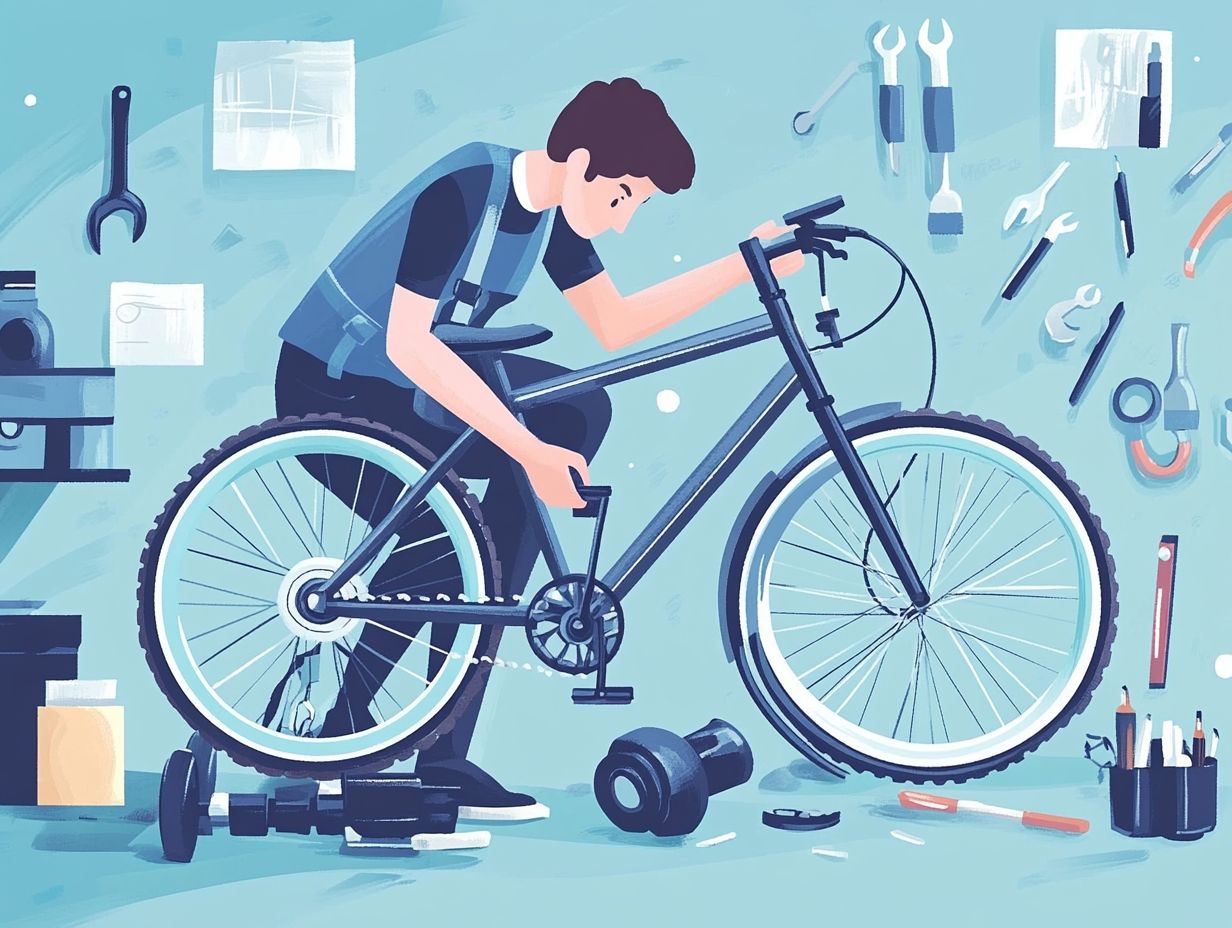
Understanding Electric Bicycle Brakes
Electric bicycle brakes are vital for your riding safety and enjoyment. They include hydraulic and disc brakes, which offer superior stopping power compared to traditional brakes.
Hydraulic brakes use brake fluid to transmit force from the lever to the calipers. When engaged, they squeeze the brake pads against the rotors, creating friction to slow your bike.
This system is known for responsive performance and even pressure distribution, requiring less effort on your part. Disc brakes, on the other hand, feature a metal rotor that spins with the wheel.
When you pull the lever, the calipers clamp the brake pads onto the rotor. Both systems are essential for maximizing safety and control.
Common Brake Problems
Brake issues can greatly compromise your performance and create safety concerns. For example, spongy brakes often indicate air trapped in the lines.
Leaks in the brake system can also reduce effectiveness and threaten your safety. Regular inspections help you catch these problems early and maintain optimal bike function.
Identifying the Issue
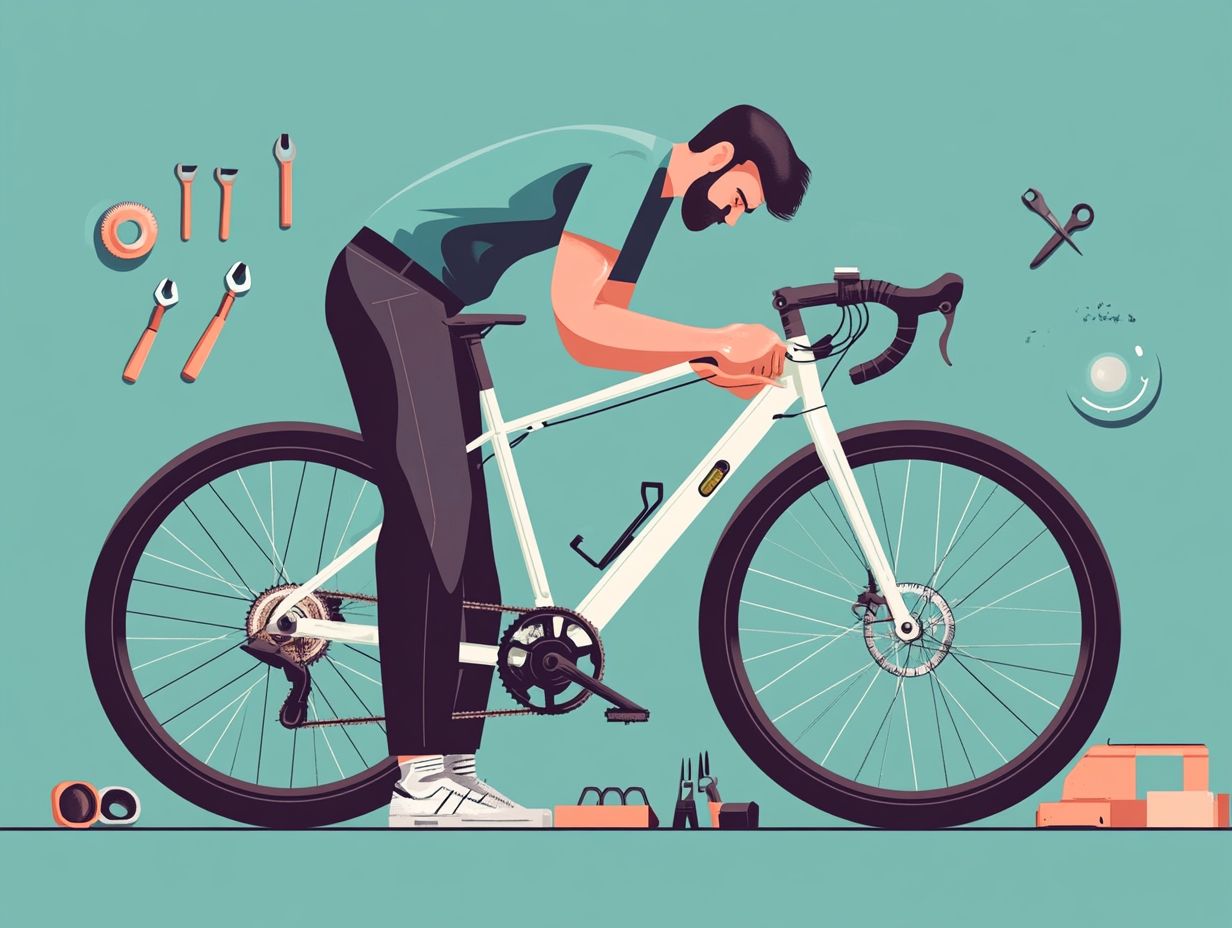
Identifying brake issues in your electric bicycle requires attention to various signs. Look for unusual sounds, a spongy brake response, and visual indicators of leaks.
Regular visual inspections are key. Check the brake pads for significant wear and ensure the brake lines are secure.
Always listen while riding. Squeaking or grinding noises can indicate that the brake components need immediate attention.
Stay alert for hissing sounds! These can indicate a serious issue with the brake fluid that needs prompt attention.
Start troubleshooting by checking the brake fluid for contamination. Replace it regularly to maintain optimal performance.
DIY Fixes for Electric Bicycle Brakes
Undertaking DIY repairs for electric bicycle brakes not only saves you money but also provides an opportunity to deepen your understanding of your ebike’s braking system. These tasks ensure optimal performance.
Whether you’re adjusting brake pads, replacing cables, or cleaning components, these tasks can significantly enhance brake effectiveness and extend the lifespan of your brake parts.
Techniques like bedding the brake pads and ensuring rotor alignment are crucial for peak performance. Address common issues like brake contamination or loss of brake pressure that can affect overall brake performance.
Adjusting Brake Pads
Adjusting brake pads is crucial for maintaining the performance of your electric bicycle’s braking system. This ensures you enjoy reliable stopping power and enhanced safety.
Proper adjustment boosts braking efficiency and extends the life of your brake components. To get started, gather the necessary tools: a hex wrench, a ruler, and a torque wrench.
The process usually involves loosening the mounting bolts to reposition the pads closer to the rotor for optimal contact.
It’s important to regularly check the alignment and wear of the pads. Uneven wear can significantly impact braking performance. Incorporating maintenance tips, such as cleaning the rotors and lubricating moving parts, greatly contributes to the overall health and reliability of your brakes.
Replacing Brake Cables
Replacing brake cables is an essential maintenance task for you as an electric bike owner. It significantly enhances brake performance and ensures a responsive ride.
This process not only boosts your safety but also extends the lifespan of your braking system.
To get started, gather the right tools, typically including a brake kit:
- a cable cutter
- a 5mm Allen wrench
- a screwdriver
- new brake cables
The first step is to carefully detach the old cables from both the brake levers and calipers. You may face challenges, such as rusted connections or frayed cable ends. A dose of patience and some penetrating oil can help with those stubborn spots.
Once you’ve removed the old cables, thread the new ones through the housing. Securing them at both ends is vital for optimal performance. Don t forget to adjust the tension; this ensures your brakes respond accurately and safely, making your ride enjoyable and secure.
Fixing Brake Levers
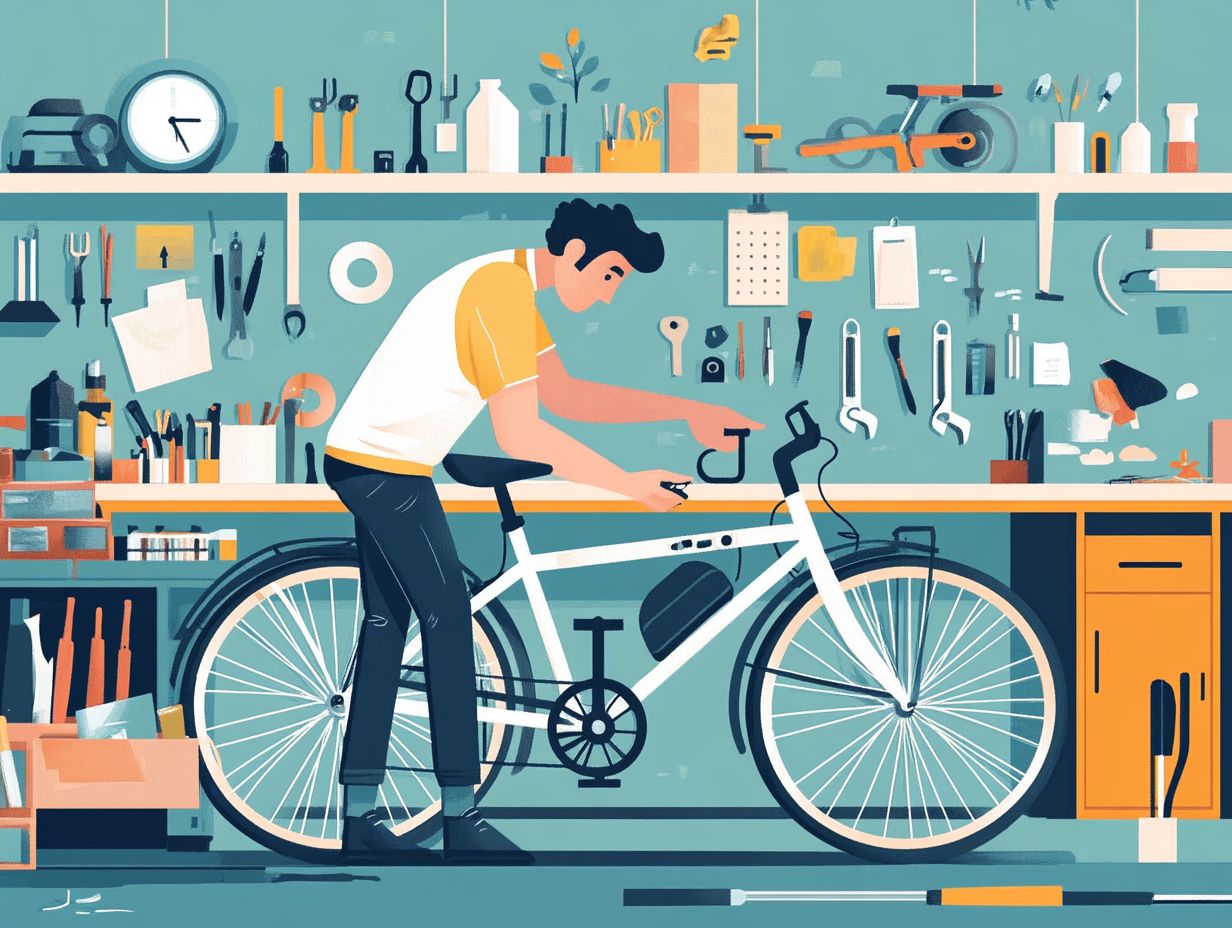
Fixing brake levers is essential for ensuring the best brake performance and your safety while riding an electric bicycle.
When your brake levers feel unresponsive or overly stiff, it indicates that underlying issues need immediate attention. Common culprits include worn-out cables or misaligned components, both of which can significantly affect performance.
To troubleshoot, begin by examining the cables for any fraying or debris trapped inside the housing. These can hinder movement. Adjusting the lever position for a more comfortable grip can also enhance your control.
If you’re dealing with brake fluid leaks or a spongy lever feel, brake bleeding might be necessary to remove air from the brake line and restore proper brake function. Regular maintenance checks help catch these issues early, ensuring your ride remains smooth and safe.
Cleaning and Lubricating Brakes
Cleaning and lubricating your brakes is a crucial maintenance practice that boosts the effectiveness and longevity of your electric bike’s braking system.
By establishing a consistent routine for this task, you can prevent contaminants like dust, grime, and moisture from accumulating, which can impair brake performance over time.
To kick off the cleaning process, gather the following tools:
- a soft brush
- isopropyl alcohol
- a clean microfiber cloth
Start by removing the wheels and inspecting the brake pads for wear. Give the brake rotors a thorough clean. Once that’s done, applying a suitable lubricant ensures smooth operation and offers protection against corrosion.
Regularly attending to these maintenance procedures leads to a safer and more enjoyable riding experience for you and your electric bike.
Preventive Maintenance for Brakes
Keeping your electric bicycle brakes in top shape is essential for enhancing safety and brake performance over time.
Don’t wait! Regular maintenance checks help you spot potential issues early, such as spongy brakes or leaks in the brake system. This gives you the chance to take corrective action before they escalate into serious problems.
By focusing on routine inspections, thorough cleaning, and precise adjustments, you can maintain optimal brake conditions and avoid unexpected issues while riding.
Tips for Keeping Your Brakes in Good Condition
Maintaining your electric bike brakes in optimal condition requires consistent upkeep and attention to detail, significantly enhancing both your safety and performance while riding.
Conduct regular inspections every few rides. Check the brake pads for wear and ensure that the cables aren’t frayed. Additionally, learning how to care for your electric bicycle’s brakes by cleaning the braking surfaces with a suitable degreaser not only boosts brake efficiency but also extends the lifespan of the components.
Using high-quality brake tools specifically designed for electric bicycles makes these tasks easier. It’s also crucial to monitor the hydraulic fluid levels, as insufficient fluid can heavily impact brake response. Additionally, if you encounter any issues with your bike’s power system, checking out troubleshooting electric bicycle battery issues can help. By taking these steps, you can prevent unexpected failures on the road, allowing you to enjoy every ride with complete peace of mind.
Frequently Asked Questions
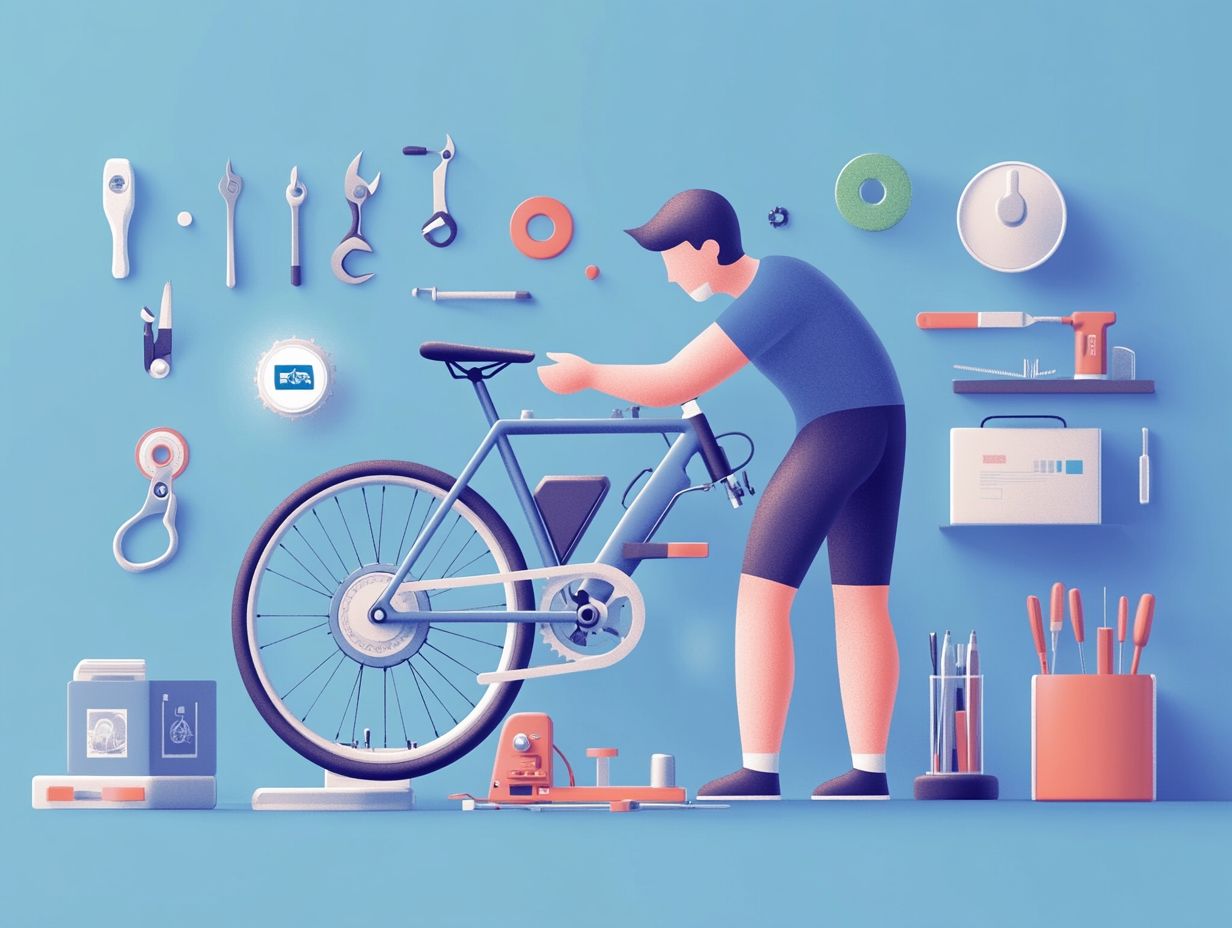
What are some common brake problems with electric bicycles and brake troubleshooting?
Here are a few common brake problems you might face with your electric bicycle: squeaking or grinding noises, uneven braking, and brakes that are too loose or too tight.
Can I fix brake problems on my electric bicycle myself?
Yes, many brake problems on electric bicycles can be fixed with simple DIY solutions. However, it’s important to have a basic understanding of how your brake system works and to follow proper safety precautions.
How can I fix squeaking or grinding noises from my electric bicycle brakes?
Squeaking or grinding noises often come from dirt or debris on the brake pads or rotors. Cleaning them with rubbing alcohol or sandpaper can usually fix the problem.
If the noises continue, your brake pads might be worn. In that case, you will need to replace them.
What should I do if my brakes feel too loose or too tight on my electric bicycle?
If your brakes feel loose, you need to tighten the brake wire. If they feel tight, adjust the brake arms.
Check your electric bicycle’s manual for detailed instructions on making these adjustments.
How do I know if my electric bicycle brakes need to be replaced?
If your brakes aren’t stopping your bicycle effectively, it’s time for a replacement. Also, look for visible wear on the brake pads during your inspection.
Regular maintenance is key to safe and efficient braking.
Can I upgrade my electric bicycle brakes?
Yes! Upgrading your brakes can boost performance.
Make sure the new brakes are compatible with your electric bicycle. Follow proper installation instructions for the best results.





